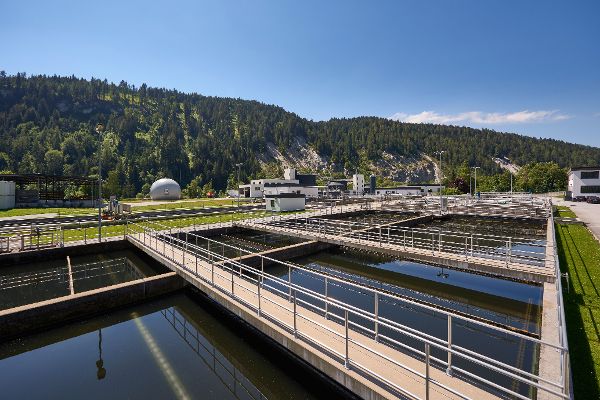Sewage treatment plants in Austria

Wastewater treatment has reached a very high quality standard in Austria, also compared to international standards.
Urban wastewater treatment plants
The purification of accruing wastewater in sewage treatment plants is an essential contribution to the careful use of water resources.
In 2018, 1869 sewage treatment plants with a dimensioning parameter > 50 population equivalents (PE60) were registered in Austria; 633 of them had a purification capacity above 2000 PE60.
The existing development capacity of the 1869 sewage treatment plants > 50 PE60 totals approx. 21.6 million PE60.
In Austria, 95.9 % of the population are connected to municipal sewage purification facilities via a sewage system.
Purification performance
In most municipal wastewater treatment plants > 2000 PE60, wastewater is mechanically treated by rakes and screens, the nutrients carbon and nitrogen are removed in the biological stage of wastewater treatment, and the nutrient phosphorus is removed either in the biological phase as well or by chemical precipitation. In addition, a large number of chemicals from households as well as from trade and industry (indirect dischargers) are decomposed or removed from the wastewater by adsorption on the sewage sludge. Moreover, a reduction of the microorganisms present in the inflow by approx. 99% takes place in the sewage treatment plants.
The average purification performance achieved by the sewage treatment plants > 50 PE60 is, for carbon removal, described by the parameter Biochemical Oxygen Demand BOD5 , 99 % and for the parameter Chemical Oxygen Demand, COD, 95 as well as for total nitrogen 81 % and for total phosphorus 91 %.
With this purification performance, Austria meets the provisions of the EU Directive concerning urban wastewater treatment at 100 %.
Costs
In 2018, the average sewage fee per inhabitant and year was EUR 161.00
The annual operating costs of a sewage treatment plant per person and year ranged between 16 Euros (sewage treatment facilities > 100 000 PE60) and 34 Euros (sewage treatment facilities 5 000 - 20 000 PE60).
Since 1959 about 48 billion Euros have been invested in wastewater management to build canals and wastewater purification facilities in Austria (almost 93,000 km of public canals, approx. 1,900 wastewater purification plants > 50 PE60).
Future challenges include the maintenance and expansion of the wastewater infrastructure and the handling of issues concerning pharmaceuticals, chemicals, antibiotic resistance, microplastics, nanomaterials, and pathogens.
Legal basis
The major legal bases for wastewater purification plants are section 33b of the Austrian Water Management Act (“Wasserrechtsgesetz”) and the Wastewater Emission Ordinances adopted on this basis. With these provisions also the requirements of EU Directive 91/271/EEC concerning urban waste water treatment are implemented in national law.